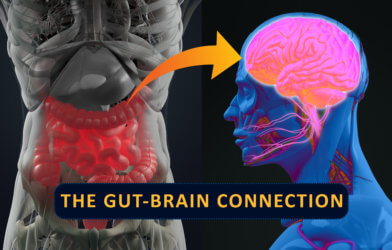Your gut — a bustling metropolis of trillions of bacteria, fungi, and viruses — might hold the secret to diagnosing and even preventing a silent epidemic sweeping across the globe: Nonalcoholic Fatty Liver Disease, or NAFLD. This isn’t just about what you eat; it’s about who’s living inside you. Groundbreaking new research suggests these tiny residents could be the key to unlocking early detection and more personalized treatments for a condition affecting up to 40% of people in Western countries.
A future where a simple, non-invasive test could tell you if you’re at risk for NAFLD, long before serious symptoms appear, is becoming a reality. This compelling vision emerges from a recent study published in the journal Microbiome. An international team of researchers has uncovered “robust and highly specific microbiome signatures” that can predict NAFLD with remarkable accuracy. This isn’t just about identifying the disease; it’s about pinpointing the unique bacterial communities and their byproducts that distinguish NAFLD from other common metabolic disorders like obesity, type 2 diabetes, high blood pressure, and even atherosclerosis.
The implications are profound. For years, finding a definitive “fingerprint” for NAFLD among the tangled web of metabolic diseases has been a major challenge. NAFLD often co-occurs with these other conditions, making it tricky to tell what’s causing what and to develop targeted diagnostics. However, this study cuts through the noise, offering a diagnostic accuracy of over 90%. This isn’t just a marginal improvement; it’s a significant leap forward in precision medicine, promising a future where your gut microbiome could be your personal health compass, guiding doctors toward tailored therapies.
Unpacking the Study: How Researchers Found the Link
To reach such impressive conclusions, the research team embarked on a massive undertaking: a large-scale analysis of gut bacteria data from over 1,200 Chinese individuals. The deliberate focus on a single ethnicity (Chinese Han) helped minimize potential variations that could skew the results, aiming for a more consistent and reliable dataset. This meticulous approach helped ensure that any identified microbial changes were truly linked to NAFLD and not to other complicating factors.
The participants in this study weren’t just a single group; they represented a diverse spectrum of health. Researchers gathered data from individuals with and without NAFLD, as well as those with other common metabolic diseases. This comprehensive inclusion allowed scientists to rigorously compare the gut microbiomes across different health states and pinpoint specific NAFLD-related patterns.
The data itself came from publicly available “shotgun metagenomic sequencing,” a sophisticated technique that reads all the DNA from the microbes in a sample, providing a detailed snapshot of the entire microbial community. To ensure consistency and reduce technical biases, all the collected samples, originating from seven different microbiome studies, were processed using the same advanced methods. This ensured that differences in the results were due to the subjects themselves, not the equipment or handling.
Beyond just identifying the types of bacteria present, the researchers also delved into what these microbes were doing. They used a cutting-edge computational approach to predict the “metabolic output” of the microbial communities – meaning, what chemicals and byproducts these microbes were producing. These microbial byproducts play a crucial role in human health and disease, including influencing liver fat absorption, which is directly relevant to NAFLD development.
A key aspect of their methodology involved the use of “machine learning models.” These are sophisticated computer programs that can learn from vast amounts of data to identify patterns and make predictions. By feeding the machine learning models information about which microbes were present (taxonomic profiles), what they could do (functional capabilities), and what they produced (metabolic outputs), the researchers trained them to tell NAFLD patients apart from healthy individuals with remarkable accuracy. This led to the identification of “microbiome signatures”—unique combinations of species and chemicals that act as telltale signs of NAFLD.
The study also distinguished between NAFLD patients based on their Body Mass Index (BMI): “NAFLD-overweight” (NAFLD-O) for those with a BMI of 25 or higher, and “NAFLD-lean” (NAFLD-L) for those with a BMI under 25. This distinction is crucial because around 20% of NAFLD patients are lean, yet they face similar health risks as overweight individuals with the disease. The research showed that lean individuals with NAFLD often have unique gut microbiome compositions compared to their overweight counterparts, further highlighting the need for personalized approaches.
Groundbreaking Discoveries: The Invisible World Within
The study’s results are truly eye-opening, offering a clearer picture of how our internal microbial world influences NAFLD. One of the most significant findings is the high accuracy of the machine learning models in predicting NAFLD. When integrating microbial species and their associated metabolic pathways, the models achieved a diagnostic accuracy of nearly 100% (0.998) in telling NAFLD-overweight patients apart from healthy controls. This incredible precision highlights the power of the gut microbiome as a diagnostic tool.
Crucially, the study also emphasized the “portability” and “prediction rate” of these microbiome signatures. “Portability” refers to how well the diagnostic model works when applied to different datasets or populations. The research showed that the identified signatures were highly portable, meaning they could be generalized and used effectively even when applied to external validation groups. This is a critical factor for any diagnostic tool to be widely applicable in medical settings.
The “prediction rate” measures how specifically the model identifies NAFLD, meaning how often it incorrectly classifies another metabolic disease as NAFLD. The models demonstrated a low prediction rate, indicating they were highly specific to NAFLD and could reliably differentiate it from other metabolic conditions. This specificity is particularly important given the challenge of distinguishing NAFLD from other co-occurring metabolic diseases.
When looking at the specific microbial signatures, researchers found that certain bacterial species and metabolites (chemicals) were consistently associated with NAFLD. For instance, specific metabolites like L-isoleucine, riboflavin (Vitamin B2), iron, and L-methionine were identified as key features in the machine learning model. These compounds have previously been linked to NAFLD and liver fat accumulation, further supporting the study’s findings.
The study also highlighted significant differences in the gut microbiome composition and metabolism between NAFLD-overweight and NAFLD-lean individuals. This reinforces the idea that NAFLD isn’t a “one-size-fits-all” disease and that different underlying microbial imbalances might be at play depending on an individual’s BMI.
Perhaps one of the most exciting results was the identification of specific “beneficial microbial consortia” – small groups of bacteria that appear to work together to potentially alleviate NAFLD. For NAFLD-overweight, a four-species group including Eubacterium hallii, Intestinibacter bartlettii, Eggerthella lenta, and Clostridium disporicum was identified as the most promising synergistic community. These species were found to be significantly higher in healthy controls and were negatively associated with NAFLD clinical markers. Importantly, some of these species, like E. hallii and I. bartlettii, have previously been reported to protect against NAFLD development.
For NAFLD-lean individuals, a three-species consortium was identified, consisting of Clostridium bolteae, Roseburia intestinalis, and Eggerthella lenta. While not all of these species showed statistically significant differences in abundance due to smaller sample sizes, they were consistently linked to favorable outcomes and associated with NAFLD-related clinical parameters. R. intestinalis, in particular, is well-studied for its beneficial effects against metabolic diseases, including NAFLD. These findings open the door to developing targeted “microbiome-based therapeutics” – introducing specific combinations of these “good” bacteria – as a viable therapeutic strategy in the future.
Looking Ahead: Study Limitations
While this study offers a monumental step forward, it’s important to acknowledge its limitations, as the researchers themselves point out. One inherent challenge in any “meta-analysis” – combining data from multiple previous studies – is the potential for inconsistencies due to different original study designs, sample collection methods, or sequencing technologies. Although the researchers took significant steps to minimize these biases, completely eliminating such variations is difficult.
Another limitation highlighted by the authors is the relatively small sample size for the “NAFLD-lean” group (18 subjects) compared to the “NAFLD-overweight” group (163 subjects) in some analyses. While the overall study included over 1,200 subjects, this specific imbalance might have impacted the ability to detect certain changes in the lean cohort. More research with larger, dedicated groups of lean NAFLD patients would be beneficial to further solidify these findings.
The study also primarily focused on Chinese Han ethnicity. While this controlled for genetic and environmental variations within the study, it also means that the findings may not be directly applicable to other ethnic groups without further validation. The gut microbiome can vary significantly across different populations due to diet, lifestyle, and genetics, so more diverse studies will be needed to confirm these signatures universally.
Finally, while the study identified potential beneficial microbial groups and their metabolic outputs, it’s a “proof-of-concept.” This means that the findings lay the groundwork for future research, but they don’t yet translate into immediate clinical treatments. Further experimental validation, including clinical trials with these specific bacterial communities, will be necessary to confirm their therapeutic potential in humans.
Paper Summary
Methodology
This study analyzed gut microbiome data from over 1,200 Chinese individuals, including healthy subjects and those with NAFLD (both overweight and lean), obesity, type 2 diabetes, high blood pressure, and atherosclerosis. Researchers used “shotgun metagenomic sequencing” to identify microbes and their chemical byproducts, then applied machine learning models to find specific “microbiome signatures” for NAFLD.
Results
The study identified highly accurate (nearly 100% for NAFLD-overweight vs. healthy) and specific microbiome signatures for NAFLD. These signatures were “portable” across different datasets and could reliably distinguish NAFLD from other metabolic diseases. Unique microbial compositions and metabolites were found for both overweight and lean NAFLD patients. The research also identified specific groups of beneficial bacteria that could potentially be used for future therapies.
Limitations
Limitations include potential inconsistencies from combining data from multiple studies, the relatively small sample size for the NAFLD-lean group, and that the findings may not be directly applicable to other ethnicities without further validation. The identified therapeutic bacterial groups require more experimental and clinical validation.
Funding and Disclosures
The research received funding from the German Research Foundation, the Federal Ministry of Education and Research (BMBF), and the European Commission (Horizon 2020). Most study participants had not recently used antibiotics or major medication.
Publication Information
The study, “Discovery of robust and highly specific microbiome signatures of non-alcoholic fatty liver disease,” was published in Microbiome on January 29, 2025.
Citation: Nychas E, Marfil-Sánchez A, Chen X, Mirhakkak M, Li H, Jia Q, Xu A, Nielsen HB, Nieuwdorp M, Loomba R, Ni Y, Panagiotou G (2025) Discovery of robust and highly specific microbiome signatures of non-alcoholic fatty liver disease. Microbiome 13, 10. https://doi.org/10.1186/s40168-024-01990-y












